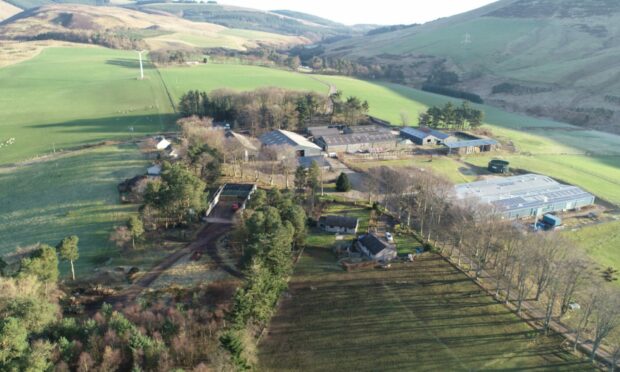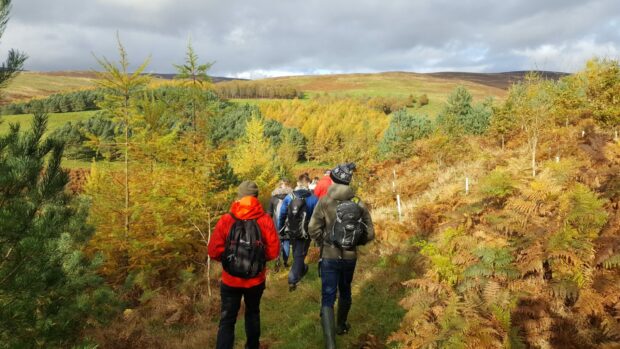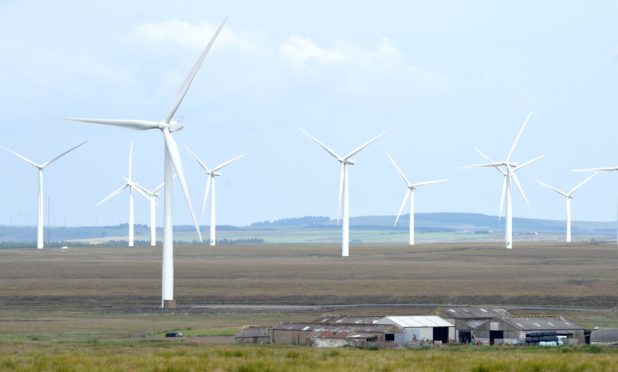JamesCan a farm be retrofitted to use green hydrogen power and become energy-independent?
The question is at the heart of the HydroGlen initiative, a project led by the James Hutton Institute (JHI) together with renewable energy specialists Water to Water to create a green hydrogen-powered farming community at the research farm at Glensaugh, near Laurencekirk.
Green hydrogen is emerging as a key component of Scotland’s decarbonisation plans.
The Scottish Government has a vision for Scotland to become a leading hydrogen nation, and current and planned policies set out a clear commitment to the staged investment and development into key projects and technologies to support national net-zero targets.
There is a need to demonstrate how farming communities can contribute to the energy transition through green hydrogen production and use.
The HydroGlen initiative is closely aligned with this vision and hopes to provide a demonstrator for communities across Scotland and the UK about a new means of being energy-independent – or fuel producers themselves.
Senior scientist Professor Alison Hester, head of the JHI’s Climate-Positive Farming Initiative at Glensaugh, of which HydroGlen is part and parcel, said: “At the centre of HydroGlen is a straightforward question: can we retrofit a rural farm and associated community to become energy-independent, using hydrogen as both an energy storage medium and a source of power?
“Our preliminary results show that it is possible, having looked at overall system concepts, energy use patterns, safety, environment and planning.”
Alex Gauntt, director of renewable energy developers Water to Water, who conceived and led the development of the HydroGlen project, said: “HydroGlen demonstrates the feasibility of farming and other rural communities becoming self-reliant, low-carbon energy producers and exporters, generating 100%-plus of their energy requirements through a combination of renewable electricity, on-site green hydrogen production, compression and storage.
“Our results will inform communities in Scotland about technical and economic requirements to become energy-independent and potentially green hydrogen fuel producers themselves.”
The Scottish Government has set clear action points up to 2026 to help achieve targets for reduction of emissions to net-zero by 2045.
Renewable electricity will play an important role in achieving these targets with Scotland aiming to operate on 100% renewable electricity by 2035 but renewable energy is intermittent – the wind does not always blow, and the sun doesn’t always shine – and needs storage solutions.
Batteries can be used for short-term energy storage and are a useful part of the HydroGlen system alongside the longer-term storage solution of hydrogen, produced via an on-site electrolyser for flexible storage and transport fuelling solutions. Electric and hydrogen-fuelled vehicle options are considered in the HydroGlen models.
The HydroGlen feasibility report considers grid-connected and off-grid configurations.
A grid connection allows excess generated renewable electricity to be sold to the national grid and simplifies system design.
The benefits of the HydroGlen system approach are multiple: it addresses renewable energy intermittency; contributes to net-zero emissions target; can be scaled to almost any community or farm; and supports wider adoption of hydrogen technology.
Additionally, it can become a new source of income for rural communities while addressing fuel, electricity and heating requirements.
Glensaugh is managed as an upland livestock farm of just over 1000 ha, with sheep, cattle, red deer, improved and extensive pastures, moorland and woodland. It is used as an open science platform for research, technological innovations, teaching and wider knowledge-exchange, and hosts academic, industry and community groups.


